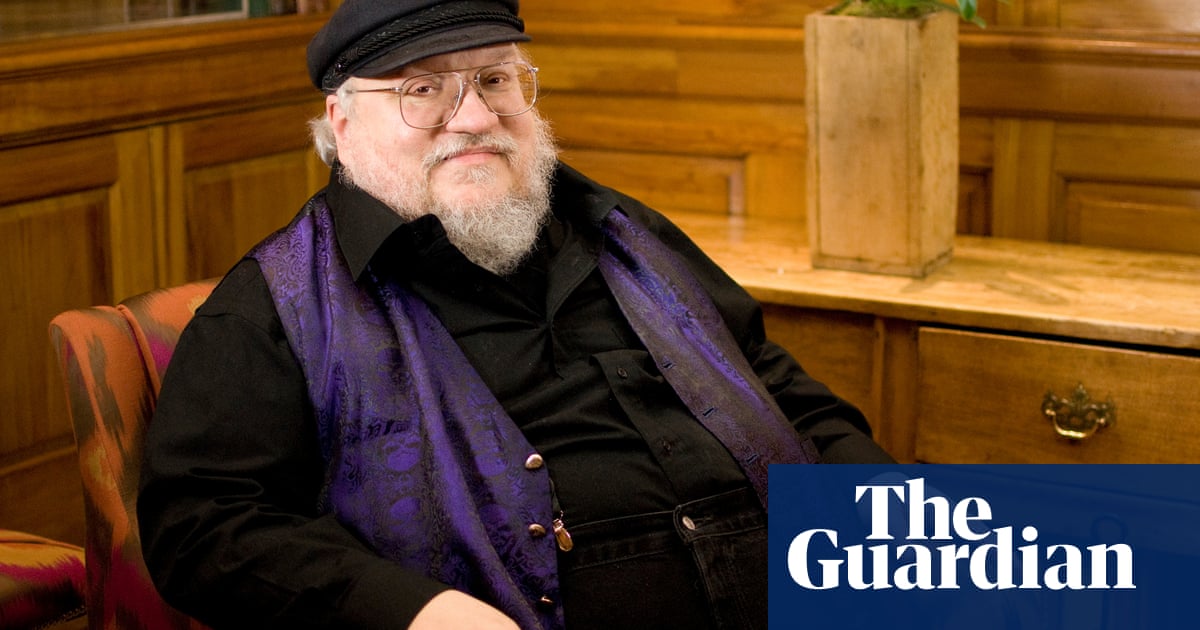
Before Hidetaka Miyazaki was given the job of salvaging his company’s embattled medieval fantasy game Demon’s Souls (2009), he was just another rank-and-file designer. For a child who grew up a voracious reader of sword-and-sorcery genre fiction, directing a grimy fantasy game was a dream. I find a great sense of poetic satisfaction in the fact that Miyazaki – now in his mid 40s and the president of developer FromSoftware, having propelled the company to global success with his demanding, distinctive, haunting and unforgettable games Dark Souls, Bloodborne and Sekiro – has been working with George RR Martin on a fantasy game. It feels like a full-circle moment for the boy who, when he couldn’t understand parts of the fantasy novels he brought home from his local library, used his own imagination to bridge the gaps.
Martin’s role on Elden Ring was completed some time ago – he workshopped the characters and their relationships, which Miyazaki and his team then integrated into the game. Aside from all the swords, Elden Ring bears almost no resemblance to Game of Thrones (it does have dragons, but if there is any complex politicking, skullduggery or mass-murder at weddings to be found here, it’s later in the game than the five hours I played). This game is more fantastical: your character can summon ethereal blades and lightning strikes, characters talk in reverent jargon about “sites of grace” and “the Tarnished”, and your horse is a corporeal ghost. After learning the basics of attacking and defending yourself, you emerge into a world called the Lands Between, where eerily glowing trees extend into the sky like mountains, bathing the forested land below in golden light.
From there the map is yours. A few steps outside the tutorial cave, I found a patronising monk sitting on top of a hill. Spotting an intimidating-looking knight on horseback down the obvious path in front of me, I shouldered a broadsword and headed around him instead, creeping through a wood where knights ambled around with lit torches. They led me to another cave full of wolves, at the end of which I found my first boss, a beastman: a shrieking, whirling tangle of pelts and blades. Miraculously, I finished him off on my first try – but then, flush with success, I thought I’d have a go at that big mounted guy in the gleaming armour outside and swiftly got stomped to death. Ah. This is a FromSoftware game, after all. Fighting is brutal and strategic – no mashing a button and hoping for the best here. You have to be on your toes and ready for a guard or parry.
What surprised me about Elden Ring is that it doesn’t feel forbidding. As much as I love Miyazaki and FromSoftware’s other games, I find them intensely stressful to play, at least the first time around. You never know what’s down the next decrepit castle corridor or at the bottom of the next crumbling staircase, but you can be fairly sure that it will be horrible and it will probably kill you, leaving you with a daunting run back to where you were. In Elden Ring the sense of open space negates this somehow. I was intrigued rather than afraid of what I might find if I followed the light of a campfire, or hauled open a long-closed dungeon doorway, or summoned my steed and rode off towards an area of the world I hadn’t yet explored. Being able to zip around the map also made a world of difference – there was no harrowing journey to be repeated over and over after meeting each of my inevitable demises.
Perhaps this is 12 years’ worth of Souls experience talking, but I also didn’t find it off-puttingly difficult. Or at least not in the same way as FromSoftware’s most recent game, the punishingly hard samurai-horror Sekiro: Shadows Die Twice. Elden Ring’s bosses are formidable, and I don’t mind admitting that I got nowhere with the demo’s final gatekeeper, Margit, a hideous giant with bits of tree growing out of his face, who has not only a giant sword and a scorpion’s tail to smash you up with but also a magical dagger that he summons out of thin air, which really seems like overkill. But I was never ambushed by the challenge. I always knew when I was in a dangerous area or about to face a particularly hard opponent and, crucially, I could run away if I wanted to. This is more like The Legend of Zelda: Breath of the Wild, in that you can get yourself into and out of trouble with delightful ease, escaping sticky situations and returning later when you’re feeling braver.
Breath of the Wild kept surfacing in my memory as I played Elden Ring, along with the 10-year-old Bethesda fantasy classic, Skyrim. At least in the previewed sections, this has a high-fantasy aesthetic vibe, with colour and light and gold-glinting sunshine in place of other Miyazaki games’ oppressive, unrelenting darkness. And the way the world is laid out, with enticing structures just visible in the distance, and caves and catacombs and tucked-away little pockets of land that provide ideal hiding places for interesting creatures or treasure, encourages adventurousness and curiosity rather than hesitance and terror. Elden Ring has multiplayer: like in Dark Souls, you can summon other players to help you, or invade their worlds to duel them. I couldn’t get it to work over the few days I had access to this demo, but because I didn’t end up stuck on one particular boss or area, I was more than happy trying things out on my own.
There’s also a minimalism to what’s on screen that makes the imaginary world conjured here feel bigger, more absorbing. Your health and stamina bars and the icons showing your equipped weapons and items disappear when they’re not needed, letting you concentrate on what you can see ahead of you, whether you’re tearing across the landscape on your horned, spectral steed or crouched in long grass, creeping up on an encampment of soldiers. Don’t get me wrong, there’s an abundance of overwhelming information nestled in the menus – there are just so many stats and different items, all accompanied by opaque text descriptions that players will enjoy piecing together into comprehensible lore. But while you’re playing, you are not bombarded with visual information.
Margit, the gatekeeper to the castle at the edge of this section of Elden Ring’s map, hides at the top of a windswept hill. To get to him, you have to make your way through barricades, past giants, and through some atmospherically terrible weather. I found a lake that was home to a dragon, and catacombs that spooked me too much to delve too deep. These sound like fantasy tropes, but there is nothing generic about Elden Ring’s alluringly creepy and subversive art direction, or the way it makes you feel when you’re fighting its creatures, sword in hand and heart in mouth. Exploring the Lands Between, I was struck by how much this felt like an adventure rather than a gauntlet. It’s like a collision between two of my favourite games of the last decade – Dark Souls and Zelda: Breath of the Wild – and that is a comparison that should excite anyone.
Elden Ring is out 25 February 2022 on Xbox, Playstation 4/5 and PC; a network test version will be playable for selected players from 12-15 November.












